Ethyl 1,3-dithiane-2-carboxylate
Synonym(s):Glyoxylic acid ethyl ester trimethylenemercaptal
- CAS NO.:20462-00-4
- Empirical Formula: C7H12O2S2
- Molecular Weight: 192.3
- MDL number: MFCD00006657
- EINECS: 243-838-4
- SAFETY DATA SHEET (SDS)
- Update Date: 2025-01-27 09:38:02
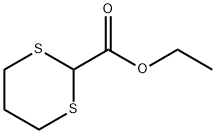
What is Ethyl 1,3-dithiane-2-carboxylate?
Chemical properties
clear yellowish liquid
The Uses of Ethyl 1,3-dithiane-2-carboxylate
Ethyl 1,3-dithiane-2-carboxylate is used in syn-selective aldol reactions. It undergoes asymmetric oxidation to give trans bis-sulfoxide. It is used to generate carbanon, which finds application in the preparation of alfa- keto esters.
Preparation
To a solution of BF3. Et2O (57.5 mL, 0.454 mmol) in CHC13 (180 mL) heated at reflux was added dropwise, over a 1h period, a solution of 1,3-propanedithiol (22.7 mL, 0.227 mmol), followed by ethyl diethoxyacetate (40 g, 0.227 mmol) in CHCl3 (40 mL). The resulting mixture was heated for 30 minutes, and then cooled to rt. The cooled solution was washed 2 times with water, once with saturated aqueous NaHC03, and then re-washed with water. The combined organic phases were dried over MgS04, then evaporated to give 41 g (94%) of Ethyl 1,3-dithiane-2-carboxylate as a yellow oi. Yield: 94%
What are the applications of Application
Ethyl 1,3-dithiane-2-carboxylate is a synthetic compound that is used in the synthesis of organic compounds . It is used in asymmetric synthesis to produce chiral products from achiral starting materials. The desulfurization reaction of ethyl 1,3-dithiane-2-carboxylate produces a mixture of the two possible stereoisomers of the product. This mixture can be separated by phase chromatography and then hydrolyzed to give the desired product. In dyslipidemia, ethyl 1,3-dithiane-2-carboxylate inhibits the activity of hepatic lipase and acidolysis. This inhibition leads to an increase in serum triglycerides and cholesterol levels. This compound also has been shown to have antiplatelet properties when administered orally or intravenously to rats without affecting platelet aggregation rates.
Synthesis Reference(s)
Synthetic Communications, 11, p. 343, 1981 DOI: 10.1080/00397918108063615
General Description
Ethyl 1,3-dithiane-2-carboxylate is an α-keto acid equivalent and bulky equivalent of acetate. It participates in syn-selective aldol reactions. It can be prepared from the reaction of ethyl diethoxyacetate and 1,3-propanedithiol in the presence of BF3/Et2O. Asymmetric oxidation of ethyl 1,3-dithiane-2-carboxylate by Modena protocol has been reported to afford trans bis-sulfoxide in 60% yield. Carbanion from ethyl 1,3-dithiane-2-carboxylate may be employed for the preparation of α-keto esters.
Purification Methods
Dissolve the ester in CHCl3, wash with aqueous K2CO3, twice with H2O, dry over MgSO4, filter, evaporate and distil the residue. [Eliel & Hartman J Org Chem 37 505 1972, Seebach Synthesis 1 17 1969, Beilstein 19/7 V 227.]
Properties of Ethyl 1,3-dithiane-2-carboxylate
| Melting point: | 19-21°C |
| Boiling point: | 75-77 °C/0.2 mmHg (lit.) |
| Density | 1.22 g/mL at 25 °C (lit.) |
| refractive index | n |
| Flash point: | 130 °F |
| storage temp. | Keep in dark place,Sealed in dry,Room Temperature |
| form | clear liquid |
| color | Colorless to Light yellow to Light orange |
| Water Solubility | Slightly miscible with water. |
| BRN | 1424352 |
| InChI | InChI=1S/C7H12O2S2/c1-2-9-6(8)7-10-4-3-5-11-7/h7H,2-5H2,1H3 |
| CAS DataBase Reference | 20462-00-4(CAS DataBase Reference) |
| NIST Chemistry Reference | Ethyl 1,3-dithiane-2-carboxylate(20462-00-4) |
Safety information for Ethyl 1,3-dithiane-2-carboxylate
| Signal word | Warning |
| Pictogram(s) |
 Flame Flammables GHS02 |
| GHS Hazard Statements |
H226:Flammable liquids |
| Precautionary Statement Codes |
P210:Keep away from heat/sparks/open flames/hot surfaces. — No smoking. P233:Keep container tightly closed. P240:Ground/bond container and receiving equipment. P241:Use explosion-proof electrical/ventilating/lighting/…/equipment. P280:Wear protective gloves/protective clothing/eye protection/face protection. P303+P361+P353:IF ON SKIN (or hair): Remove/Take off Immediately all contaminated clothing. Rinse SKIN with water/shower. P403+P235:Store in a well-ventilated place. Keep cool. P501:Dispose of contents/container to..… |
Computed Descriptors for Ethyl 1,3-dithiane-2-carboxylate
| InChIKey | ANEDZEVDORCLPM-UHFFFAOYSA-N |
| SMILES | S1CCCSC1C(OCC)=O |
New Products
4,4-Difluoropiperidine hydrochloride tert-butyl 9-methoxy-3-azaspiro[5.5]undecane-3-carboxylate Indole Methyl Resin N-Isopropylurea N,N-Dicyclohexylcarbodiimide(DCC) MELDRUMS ACID 5-METHYLISOXAZOLE-4-CARBOXYLIC ACID Magnessium Bis glycinate Zinc ascorbate 1-bromo-2-butyne 2-acetamidophenol 9(10H)-anthracenone Erythrosin B, 4-Piperidinopiperidine 2-((4-morpholinophenylamino) (methylthio) methylene) malononitrile 2,4-dihydroxybenzaldehyde 3-(4-morpholinophenylamino)-5-amino-1H-pyrazole-4-carbonitrile Methyl 2-methylquinoline-6-carboxylate 2,6-dichloro-4-nitropyridine 4-Bromo-2-chlorobenzonitrile 2-(benzylamino)acetic acid hydrochloride 4-(tert-Butoxycarbonylamino)but- 2-ynoic acid 3,4-dihydro-2H-benzo[b][1,4]dioxepine 1-Phenyl-1-cycloprppanecarboxylicacidRelated products of tetrahydrofuran

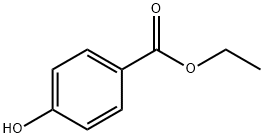

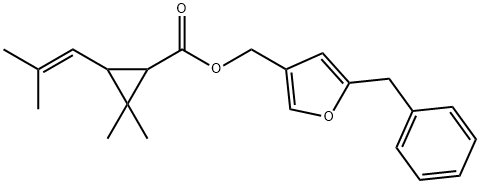
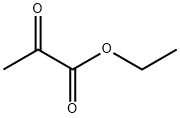


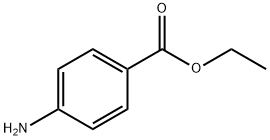
You may like
-
 Ethyl 1,3-Dithiane-2-carboxylate CAS 20462-00-4View Details
Ethyl 1,3-Dithiane-2-carboxylate CAS 20462-00-4View Details
20462-00-4 -
 Ethyl 1,3-dithiane-2-carboxylate CAS 20462-00-4View Details
Ethyl 1,3-dithiane-2-carboxylate CAS 20462-00-4View Details
20462-00-4 -
 Ethyl 1,3-dithiane-2-carboxylate CAS 20462-00-4View Details
Ethyl 1,3-dithiane-2-carboxylate CAS 20462-00-4View Details
20462-00-4 -
 3-(4-amino-1-oxoisoindolin-2-yl)-1-methylpiperidine-2,6-dione 98%View Details
3-(4-amino-1-oxoisoindolin-2-yl)-1-methylpiperidine-2,6-dione 98%View Details -
 20677-73-0 (2,2-diethoxyethyl)methylamine 98%View Details
20677-73-0 (2,2-diethoxyethyl)methylamine 98%View Details
20677-73-0 -
 3-(4-(hydroxyamino)-1-oxoisoindolin-2-yl)piperidine-2,6-dione 98%View Details
3-(4-(hydroxyamino)-1-oxoisoindolin-2-yl)piperidine-2,6-dione 98%View Details -
 57381-49-4 2-bromo-4-chlorobenzonitrile 98%View Details
57381-49-4 2-bromo-4-chlorobenzonitrile 98%View Details
57381-49-4 -
 4,6-dichloropyrimidine-5-carbaldehyde 98%View Details
4,6-dichloropyrimidine-5-carbaldehyde 98%View Details
5305-40-8
